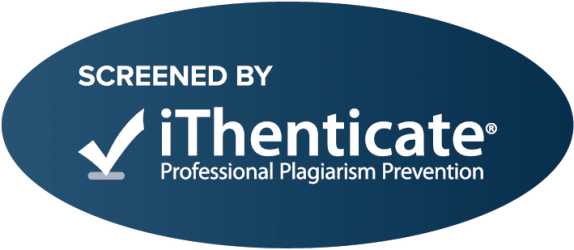The Effectiveness of a Social Story Intervention in Decreasing Problem Behavior in Children With Autism Spectrum Disorder
Keywords:
Social stories, problem behaviour, children with autismAbstract
This study explores whether or not Social Stories Intervention Strategy has positive effects decreasing problem behaviour of children with autism. Participants were ten children between the ages of seven and nine who attended a center for autism. A pre- post design was used to examine the effectiveness of the social stories Intervention Strategy on decreasing problem behaviour of the target children. Findings from this study indicated the effectiveness of the social stories intervention employed in teaching the target children problem behaviour. On the basis of the findings, the study advocated for the effectiveness of the social stories intervention employed in teaching the target children problem behaviour.Downloads
References
Adams I., Gouvousis, A., Van Lue, M., & Waldron, C. (2004). Social story intervention: Improving communication skills in a child with autism spectrum disorder. Focus on Autism and Other Developmental Disabilities, 19(2), 87-84.
Adel Abdulla, M.& Amal A. Mostafa(2012). The effect of social stories intervention technique on self management of eating behavior of a child with autism. International Journal of Psycho-Educational Sciences, 1, 38-51.
Adel Abdulla, M.& Mourad , A. Eissa (2014). Contemporary Perspectives on autism Identification, assessment, problems, intervention, and instruction. Arees University Press.
Agosta, E., Graetz, J. E., Mastropieri, M. A., & Scruggs, T. E. (2004). Teacher-researcher partnerships to improve social behavior through social stories. Intervention in School and Clinic, 39(5), 276-287.
American Psychiatric Association (2000). Diagnostic and statistical manual of mental disorders (4th ed.) text revision. Washington, DC: American Psychiatric Association.
Barry, L. M., & Burley, S. B. (2004). Using social stories to teach choice and play skills to children with autism. Focus on Autism and Other Developmental Disabilities, 19, 45- 51.
Brownell, M. D. (2002). Musically adapted social stories to modify behaviors in students with autism: Four case studies. Journal of Music Therapy, 39, 117-144.
Crozier, S., &Tincani, M. (2005). Using a modified social story to decrease disruptive behavior of a child with autism. FADD, 20, 150-157.
Cullain, R. E. (2000). The effect of social stories on anxiety levels and excessive behavioral expressions of elementary school aged children with autism (Doctoral dissertation, The Union Institute Graduate College, 2000). Dissertation Abstracts International, 62, 2383.
Feinberg, M. J. (2001). Using social stories to teach specific social skills to individuals diagnosed with autism. Unpublished doctoral dissertation, California School of Professional Psychology, San Diego.
Gray, C. (1994). The new social stories book. Arlington, TX: Future Horizons.
Gray, C. A. (1995). Teaching children with Autism to “read” social situations. In K.A. Quill (Ed.) Teaching children with Autism: Strategies to enhance communication and socialization (pp. 219-241). New York: Delmar.
Gray, C. (2000). The New Social Story Book. (Illustrated edition). Arlington, TX: Future Horizons, Inc.
Gray, C., & Garand, J. (1993). Social Stories: Improving responses of students with autism with accurate social information. Focus on Autistic Behavior, 8, 1-10.
Hagiwara, T.,(1999). A multimedia social story intervention: Teaching skills to children with autism. Focus on Autism and Other Developmental Disabilities, 14(2), 82-95.
Hodgdon, L. A. (1995). Visual Strategies for Improving Communication. Troy, MI: QuirkRoberts Publishing.
Horner, R. H., Carr, E. G., Strain, P. S., Todd, A. W., & Reed, H. K. (2002). Problem behavior interventions for young children with autism: A research synthesis. Journal of Autism and Developmental Disorders, 32, 423-446.
Kuoch, H., & Mirenda, P. (2003). Social Story interventions for young children with autism spectrum disorders. Focus on Autism and Other Developmental Disabilities, 18, 219– 227.
Kuttler, S., Myles, B. S., & Carlson, J. K. (1998).The use of social stories to reduce precursors to tantrum behavior in a student with autism. FADD, 13 (3), 176-182.
Logsdon, R.(2012). The effects of social stories on the communicative competence of four preschool students of autism spectrum disorder. Unpublished master dissertation, State University of New York at Fredonia.
Moyes, R. A. (2002). Addressing the Challenging Behavior of Chidlren with High- Functioning Autism/ Asperger Syndrome in the Classroom: A Guide for Teachers and Parents. London, England: Jessica Kingsley Publishers Ltd.
Mundy, P., Sigman, M., & Kasari, C. (1993). The theory of mind and joint-attention deficits in autism. In S. Baron-Cohen, H. Tager-Flusberg, & D. J. Cohen (Eds.), Understanding others minds: Perspectives from autism (pp. 181-203). New York: Oxford.
Pettigrew, J. (1998). Effects of the modeling of verbal and nonverbal procedures for interaction with peers through social stories (Doctoral dissertation, Texas Woman’s University, 1998). Dissertation Abstracts International, 59, 1452.
Reynhout, G. & Carter, M. (2006). Social stories for children with disabilities. Journal of Autism and Developmental Disorders, 36, 445-449.
Romano, J. (2002). Are Social Stories Effective in Modifying Behavior in Children with Autism? Dissertation Abstracts International: Section B: The Sciences and Engineering, 63(2-B), pp.1046.(UMI No. AA13044313).
Rowe, C. (1999). Do social stories benefit children with autism in mainstream primary schools? British Journal of Special Education, 26(1), 12-14.
Simpson, R. L., & Myles, B. S. (Eds.). (1998). Educating children and youth with autism: Strategies for effective practice (Austin, TX: Pro-Ed).
Smith, C. (2001). Using social stories to enhance behavior in children with autistic spectrum difficulties. Educational Psychology in Practice, 17, 337-345.
Staley, M. J. (2001). An investigation of social-story effectiveness using reversal and multiple-baseline designs. Unpublished doctoral dissertation, University of Kansas.
Additional Files
Published
How to Cite
Issue
Section
License

This work is licensed under a Creative Commons Attribution-NonCommercial-NoDerivatives 4.0 International License.










